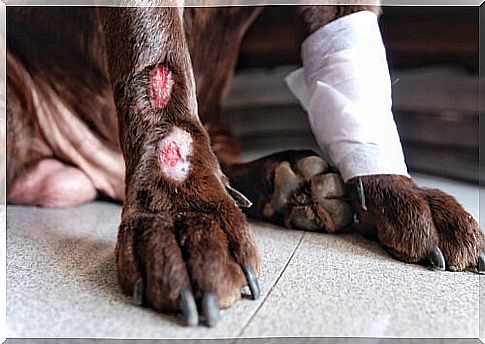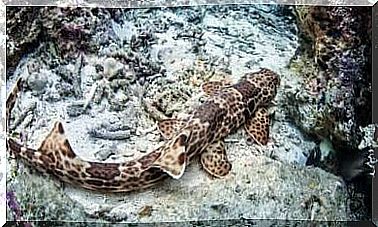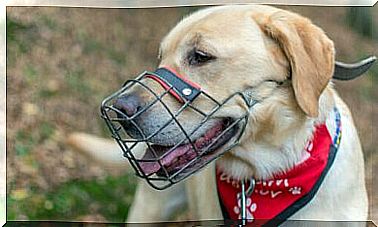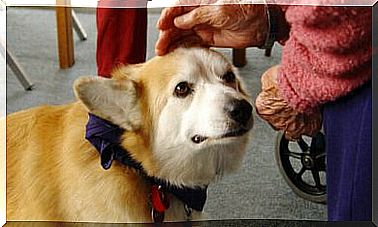Acral Dermatitis In Dogs Caused By Licking

Acral dermatitis in dogs is most common in the front legs, as this is the most accessible area for the dog.
While cats are known to continually lick themselves, dogs also use their tongues to “groom” themselves.
But in some cases, the licking is so frequent and intense that it results in acral dermatitis. In this article, we’ll tell you what it is and how to treat it.
What is Acral Dermatitis?
Also known as acral furunculosis or acral granuloma, it is a chronic disease caused, in most cases, by the dog’s behavior, which excessively licks a specific area. This prevents the wound from healing completely and furthermore ends up aggravating it.
Acral dermatitis usually starts as a bacterial or fungal infection, an allergy, a cut, or a rash due to an insect bite.
In some cases, it occurs as a result of behavioral problems or the dog’s boredom. In this way, he licks non-stop a specific area, especially the front paws.
When the wound bothers the dog, the first thing he does is try to heal and clean himself with saliva. However, the problem is that this behavior becomes compulsive and even harmful to your health.

The cycle seems to be endless, as the animal is relieved to lick it, but immediately needs to do it again when the itching returns.
As a result, this repetitive behavior turns into acral dermatitis, an infection far more serious than the original lesion.
While any dog can suffer from this problem when under a lot of stress (which is why it is so common in shelters and kennels), there are some breeds more prone to acral dermatitis.
Among them, we can highlight the Labrador Retriever, the German Shepherd, the Neapolitan Mastiff, the Golden Retriever, the Doberman Pinscher, the Great Dane and the Spanish Mastiff.
How to identify acral dermatitis?
Acral dermatitis is not difficult to detect. After all, we will see the dog continually licking or biting a specific area of the body.
In addition, there will appear sores, loss of hair, ulcers, inflammation, bleeding or production of a yellowish liquid. There can also be a nauseating smell and a bad appearance.
It is very important to take our pet to the vet so that he can make the correct diagnosis. Sometimes, at first glance, it may look like acral dermatitis when in reality it is an infection or a parasite.
If the professional confirms the disease, the next step is to identify its cause. That way you can treat and cure her.
As a first step, you will be given an antibiotic to reduce the symptoms that cause the animal to lick or bite the area and thus allow for healing. You can also apply creams or topical treatments.
So that the dog doesn’t bite, an Elizabethan collar will be put on, although the area can also be bandaged. The animal must always be supervised by the owner.
Changing the gauze or dressings will be a challenge, but this should be done as often as indicated by the veterinarian.

When acral dermatitis appears due to a behavioral problem in the dog, it is recommended to take him for a walk, play with him more and give him more attention.
This way you will reduce anxiety and stress and he will no longer be in the habit of getting hurt.
Recovery
A healthy and peaceful environment is essential for recovery and for preventing the situation from happening again.
If acral dermatitis is caused by the presence of parasites or bacteria, reinforce vaccines and ensure good hygiene for the animal.
You should keep in mind that acral dermatitis is not serious if it is detected and treated early enough, but the most important thing is that it does not reoccur in the future. Therefore, detecting the cause is essential, in addition to the treatment itself.









